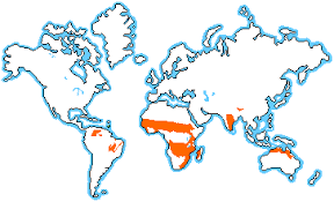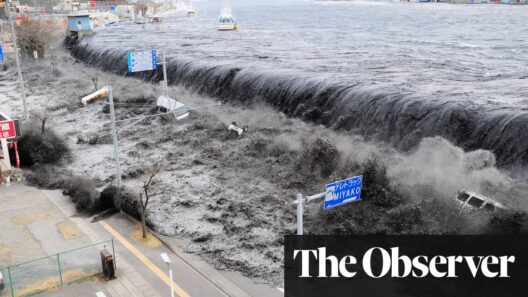Deforestation remains a pressing concern in contemporary environmental discourse, primarily due to its palpable linkage with climate change. At first glance, the connection between trees disappearing from the landscape and the global temperature rising might seem tenuous. However, upon scrutinizing the intricate interplay between ecosystems and atmospheric dynamics, a compelling narrative emerges: deforestation indeed catalyzes changes in the climate, and understanding this interface is crucial for formulating effective mitigation strategies.
Forests, often described as the lungs of our planet, perform invaluable functions beyond mere aesthetics. They act as carbon sinks, absorbing carbon dioxide (CO2) from the atmosphere and storing it in their biomass. This sequestration is vital; in fact, it is estimated that forests absorb approximately 2.6 billion metric tons of CO2 annually. When deforestation occurs, not only is this significant carbon storage eliminated, but the carbon previously sequestered is released back into the atmosphere, exacerbating the greenhouse gas effect. The sum of these actions contributes directly to the acceleration of climate change.
The most profound effects of deforestation manifest through the disruption of the carbon cycle. Trees store carbon as they grow, and when they are cut down or burned, this carbon is returned to the atmosphere as CO2. This release can lead to drastic increases in atmospheric CO2 concentrations, fostering an environment conducive to global warming. The phenomenon is most starkly observed in the Amazon rainforest, where rampant deforestation has made it a net emitter of carbon, rather than a carbon sink.
In addition to carbon emissions, deforestation disrupts local and global weather patterns. Trees play a critical role in regulating humidity and precipitation through the process of transpiration. When trees release water vapor into the atmosphere, they contribute to cloud formation and precipitation. The removal of large swathes of forest diminishes this effect, ultimately leading to reduced rainfall. A stark example is found in Indonesia, where extensive palm oil plantation development has contributed to altered precipitation patterns, resulting in both droughts and floods in varying regions.
Moreover, the loss of forests also influences soil quality and stability. Roots bind the soil, preventing erosion and maintaining ecosystem integrity. When forests are cleared, this protective layer is stripped away, leading to soil degradation. Compromised soil health can diminish agricultural productivity, necessitating the use of fertilizers, which can further pollute waterways and emit nitrous oxide—a potent greenhouse gas. Thus, deforestation creates a ripple effect that not only affects the immediate locality but can also have far-reaching implications for global climate stability.
It is imperative to recognize that the consequences of deforestation extend beyond the loss of trees; they entail profound sociocultural repercussions, especially for indigenous communities that rely on forests for their livelihoods and cultural identities. Displacement and loss of land can lead to socio-economic instability, which further complicates the global response to climate change. The intersection of social justice and environmental stewardship becomes evident, highlighting that the quest for sustainable practices must encompass respect for indigenous rights and traditions alongside ecological preservation.
Nevertheless, the potential reversibility of deforestation’s impacts is a beacon of hope. Reforestation, afforestation, and sustainable forestry practices hold the keys to mitigating climate change effects and restoring ecological balance. By prioritizing conservation and restoration initiatives, societies can enhance carbon sequestration, rehabilitate degraded lands, and foster biodiversity. Initiatives such as the Bonn Challenge aim to restore 150 million hectares of deforested and degraded landscapes by 2020. These global efforts to reestablish forest cover should be amplified, embodying a proactive stance against climate change.
Technological advancements also facilitate the fight against deforestation and climate change. Satellite imagery, drone monitoring, and data analytics can aid in tracking deforestation rates and enforcing conservation policies. These tools empower governments, non-profits, and local communities to react swiftly to illegal logging and deforestation activities. By leveraging technology, we can foster transparency and accountability in forest management, ensuring that protective measures are enacted effectively.
Public awareness is another critical component in the combat against deforestation. Education initiatives can galvanize communities to advocate for sustainable practices and to support policies that prioritize forest conservation. By fostering a culture that values ecological health, social responsibility, and economic viability, societies can collectively strive for a more sustainable future.
In conclusion, the argument is unequivocal: deforestation does indeed cause climate change, and the ramifications are profound and far-reaching. The intricate interactions between trees, carbon cycles, weather patterns, soil health, and human livelihoods highlight the necessity of an integrated approach to environmental conservation. Addressing the deforestation crisis requires concerted efforts that encompass technological innovation, social justice advocacy, and a commitment to sustainable development. Only through such multifaceted strategies can we truly grapple with the daunting challenges posed by climate change while nurturing the planet’s ecological integrity.






